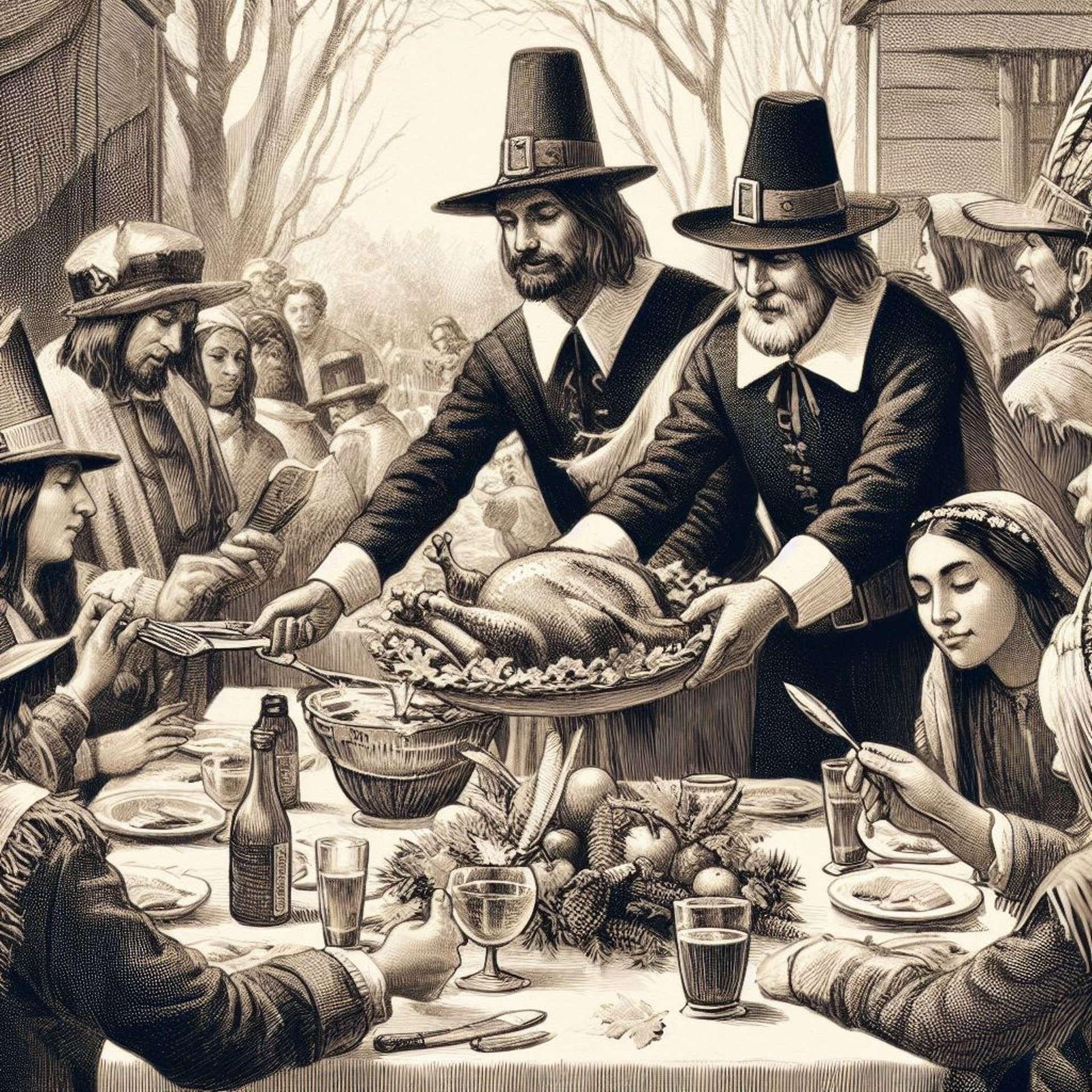
Guide to Thanksgiving Origins, Global Celebrations, and U.S. Traditions
A short guide to Thanksgiving: Origins, Global Celebrations, and U.S. Traditions. With a list of 10 things, we do in the US.
EDUCATIONAL
ThingamaGeorge
11/12/20232 min read


Thanksgiving Beyond U.S. Borders
While Thanksgiving is quintessentially American, its observance is not confined to the U.S. alone. Canada celebrates its version of Thanksgiving in October, and countries like Liberia, Grenada, Germany, the Netherlands, and Japan have their unique holidays that echo the themes of gratitude and harvest celebration.
Celebrating Thanksgiving in the U.S.: A Kaleidoscope of Traditions
Thanksgiving is synonymous with family, feasting, and festivities in the United States. It’s a time when loved ones travel great distances to reunite and share a bountiful meal, typically featuring turkey, stuffing, and an array of delectable side dishes. Expressing gratitude, watching parades and football games, volunteering, and even getting a head start on holiday shopping during Black Friday are all integral parts of the celebration.
Embracing the Spirit of Thanksgiving
Thanksgiving is more than just a holiday; it's a time to reflect, give thanks, and enjoy the company of loved ones. Whether it’s celebrated with a turkey feast in the U.S., a harvest festival in Germany, or a day of labor appreciation in Japan, the underlying message is universal: to express gratitude and celebrate the abundance of life.
Thanksgiving in the USA is celebrated with various traditions, activities, and themes centered around gratitude, family, and feasting. Here is a breakdown of common ways people celebrate:
Family Gatherings:
Reunions: Many people travel long distances to be with their family.
Dinner: A large meal is the centerpiece of the celebration.The Feast:
Turkey: The most common main dish of a Thanksgiving dinner.
Side Dishes: Include stuffing, mashed potatoes, gravy, cranberry sauce, corn, green beans, and dinner rolls.
Desserts: Pumpkin pie is a traditional Thanksgiving dessert.Cooking Together:
Preparation: Family members often cook together, making it a communal activity.Expressing Gratitude:
Reflection: People take time to reflect on what they are thankful for.
Toasts and Prayers: Some families have the tradition of giving a toast or saying a prayer before the meal.Watching Television:
Parades: The Macy’s Thanksgiving Day Parade in New York City is a popular event to watch.
Football: Watching NFL football games is a Thanksgiving Day tradition.Volunteering:
Community Service: Many people take the opportunity to volunteer at food banks or soup kitchens.Black Friday:
Shopping: The day after Thanksgiving, known as Black Friday, marks the beginning of the Christmas shopping season with sales and deals in stores.Outdoor Activities:
Turkey Trots: Some communities hold road races, often called "turkey trots," on Thanksgiving morning.
Playing Football: Families and friends may play touch or flag football games.Decorations:
Autumn Themes: Homes are often decorated with pumpkins, cornucopias, fall leaves, and other autumnal items.Rest and Relaxation:
Down Time: After the feast, it is common for people to relax, nap, or spend time together casually.
The way Thanksgiving is celebrated can vary widely depending on individual family traditions, regional customs, and personal preferences.
A Guide to Thanksgiving:
Origins, Global Celebrations, and U.S. Traditions
Thanksgiving is a cherished holiday celebrated predominantly in the United States and Canada, deeply rooted in historical traditions and harvest celebrations. This article delves into the rich history of Thanksgiving, its global observances, and the myriad ways it is celebrated in the United States.
The Historical Tapestry of Thanksgiving
The traditional narrative of Thanksgiving traces back to the 1621 Plymouth feast, where Pilgrims and Native Americans came together to celebrate a successful harvest. This three-day event laid the groundwork for what would evolve into the Thanksgiving we know today. President Abraham Lincoln further solidified the holiday's status in 1863, designating it a federal holiday during a tumultuous time in American history.
Important Links
Socials
Blog Post Topics:
Copyright © 2019-2025 WebSpace4Rent, Inc. (WS4R) - All Rights Reserved. WebSpace4Rent.com
WebSpace4Rent, Inc. may earn an Affiliate Commission if you purchase something through recommended links on this webpage or in this article.
